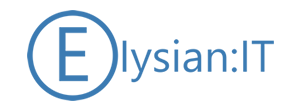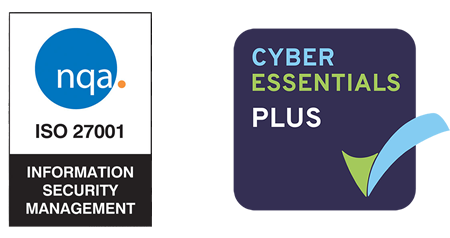
01256 976 650
ElysianIT Limited
Upper Farm, Wootton St. Lawrence,
Basingstoke, Hampshire, RG23 8PE
Many organisations seeking to boost productivity, efficiency and enhance employee collaboration look at their IT solutions and process. With historic file shares and company data silo’s being a number one target ripe for digital transformation via the adoption of an enterprise ECM platform.
As such, it’s really no such surprise that the Microsoft’s SharePoint solution is a number one go to solution for many, being a highly flexible, secure, cloud-based platform that can truly transform organisations and working practices.
However as the Boston Consulting Group cite, a staggering 70% of digital transformation projects fall short of their goals. So with so much at stake, making sure you have your eyes wide open on your elected approach of technology adoption, is key in increasing your success rate.
From our experience – it’s far more expensive to fix a SharePoint solution rather than doing it right the first time!
Specifically, in this blog post we’ll focus on the issues that can arise when taking the “lift & shift ” approach of SharePoint adoption, to help you understand why it might not be the best option.
Firstly let’s just clarify what we’re referring to when mentioning “lift & shift “. Typically it’s just as it sounds, “lift & shift ” is just a simplistic means of migrating your content into SharePoint by transferring your content as-is. For example, this could be simply moving various areas of a shared network drive folder structure directly in by cutting and pasting or using a migration tool.
Notably, the ‘lift & shift ’ approach doesn’t take the time to restructure, rework or rethink how you’re organising your content. Time also isn’t afforded to reflect on how your organisation is evolving and will further evolve through the adoption of SharePoint. Whilst it may appear to be the fastest, cheapest and easiest approach, the adoption of the platform is often less than ideal and the value derived isoften lacking, especially over the long run.
The reasons you might consider this approach will no doubt vary, but in our experience, the most common justifications are tight (read unrealistic) deadlines, limited internal resources, an assumption that it’s going to be easier to just get it in and adjust it later but the killer is the lack of awareness of the negative side effects of this approach.
Here are 4 key considerations you should be aware of when thinking of taking the “lift & shift ” approach to your SharePoint adoption.
Reduced ROI
SharePoint provides a lot of value if implemented correctly. The base level of ROI is gleaned from the fundamentals like searching, sorting, filtering, version control and security. You’ll get the best investment ROI from the advanced features, such as:
- Meeting your organisational compliance needs
- Automating your processes through forms and workflows
- Enhanced insight, reporting and analytics for better decision-making
The degree to which an organisation realises the benefits from these advanced features is directly proportional to the maturity of their SharePoint implementation. These features often require the use of metadata, content types and a proper scalable structure that spreads the content over multiple site collections, lists and libraries.
Limited Scalability
SharePoint Online and SharePoint on-premises have limits. While 30 million documents per library sounds impressive. A couple of the most common problems we see with issues around lifting & shifting in SharePoint are:
- File path limitations – deep folder hierarchies in network file storage can exceed the 400-character limit in SharePoint.
- Security limitations – security becomes harder to manage. It’s not unheard off to see instances where the number of unique security profiles per folder exceeds the recommended 5000 unique security scopes in a given document library.
SharePoint is designed to scale across many site collections, lists and libraries, so it’s best to transform and spread content across many lists, libraries and site collections.
Poor Adoption Levels
Lifting & shifting into SharePoint without creating a proper SharePoint solution for migration will have a negative impact on the employee experience. As their old data retrieval approaches won’t feel right in the new interface, with it ‘getting in the way‘ and ‘not adding any value‘. Especially if no end-user training is provided.
End-users will naturally, out of frustration and necessity to achieve in their roles, adopt their own working practices and work-arounds, which often include bad habits such as:
- Creating multiple copies of documents (v1, v2)
- Creating complex folder structures that are hard to use and manage
- Caching copies of content in multiple locations
- Locking down content unnecessarily
- Breaking security inheritance at the folder or document level
It is both costly and time consuming to fix and clean up the solution when these bad habits are being followed, with additional effort to re-train end-users on the proper use of the platform.
No Improved Information Architecture (IA)
Hierarchical folders, as used in network folder shares, are not how modern information architectures (IA) are designed.
Search in SharePoint Online is optimized for metadata, content types, and a flatter file structure. If you are doing a migration, this is a good opportunity to build a new information architecture to improve the searchability and findability of files. This approach, typically referred to as a “transformative approach”, can be particularly useful to ensure that your content is structured to support your organisation into the future and cut away any legacy constraints.
Studies have pointed out that organisations can expect a 20% ROI in terms of productivity with a proper ECM platform such as SharePoint, where efficiencies are realised by:
- Less time spent searching
- Less copies are floating around as the system provides versioning
- Improved trust in the documents that are found
- Avoid having to recreate existing documents
- Ability to collaborate more efficiency
- Ensuring that decisions are being made on current and correct information
- Improved ability to share information
- Improved discovery and compliance
Getting SharePoint right, the first time around, requires more effort up front but will enable your organisation to realise the benefits of the platform in a timelier fashion, and with less overall effort and cost.




